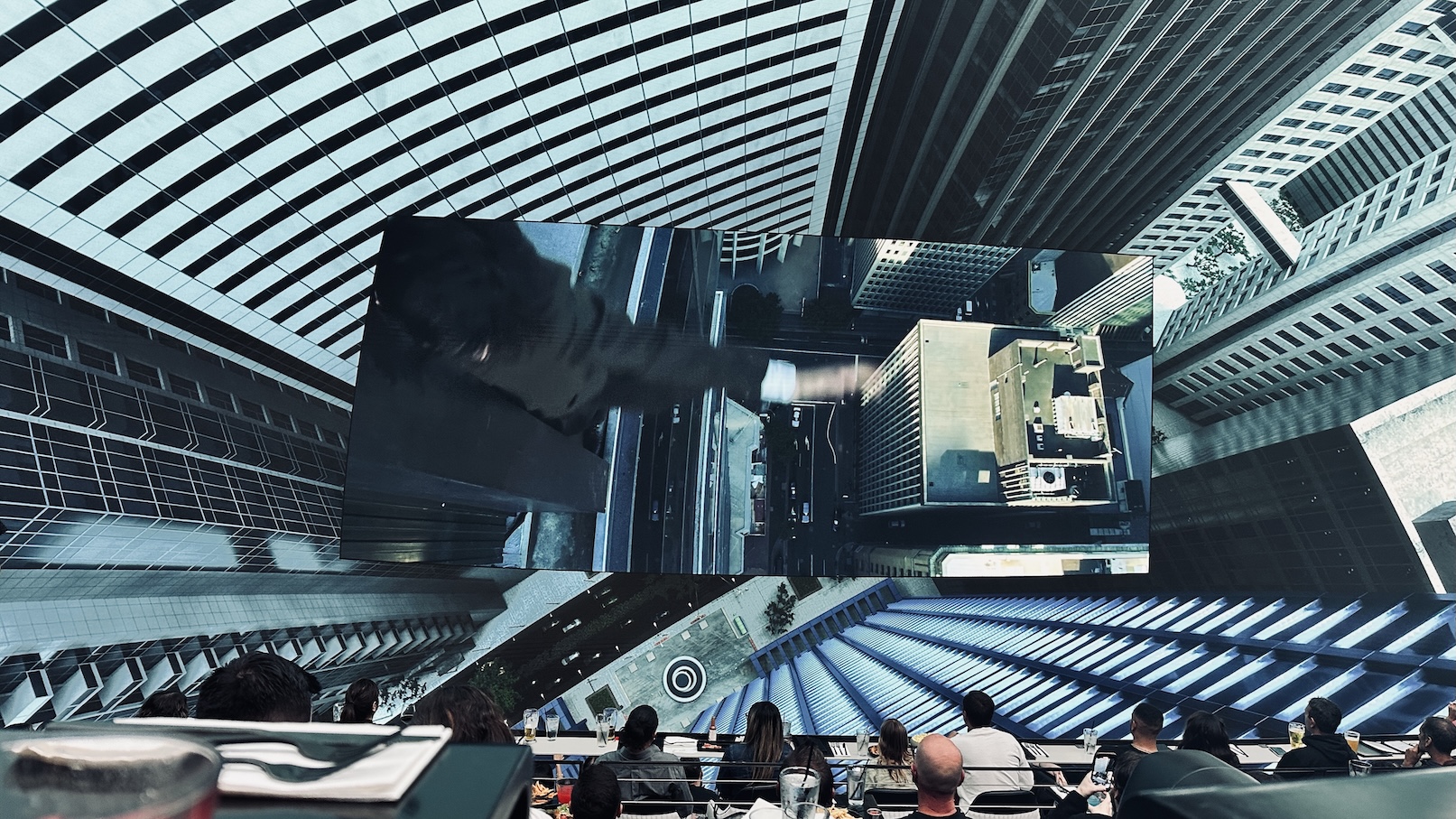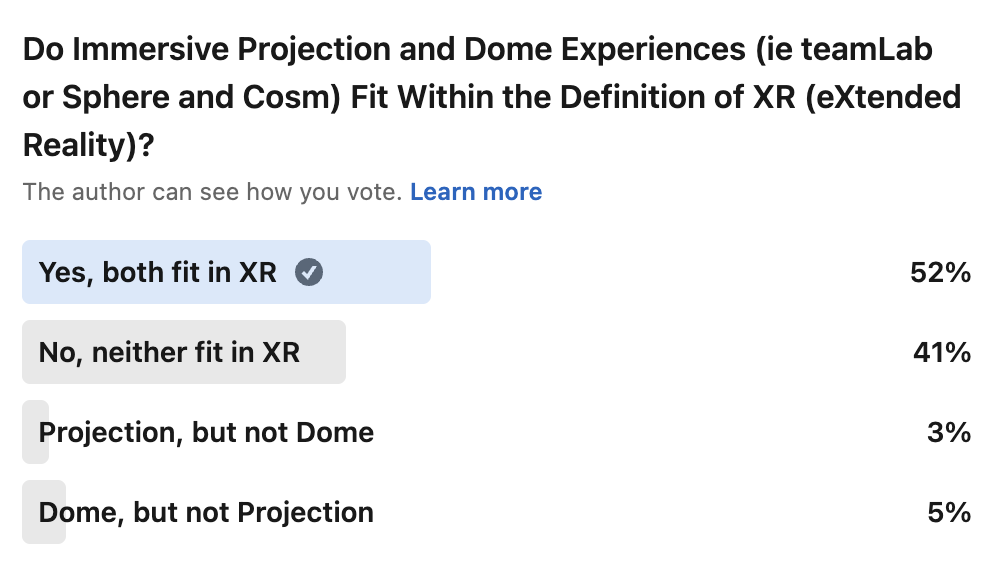
Last week I went to see The Matrix at COSM in Los Angeles. The 1999 cyberpunk classic starring Keanu Reeves as Neo was reimagined for the dome screen by experiential agency Little Cinema.
It was a perfect execution of taking a film designed for a 2D screen and applying just the right amount of 3D elements to make it immersive. The movie was shown in a letterbox window on the dome. For much of the film, the dome screen surrounding the movie window was black. But in certain scenes, the rest of the dome came to life with 3D rendered environments that added a contextual sense of being there.
In one scene, as Neo climbed out the window of his office to escape the Agents, the audience was transported to the top of the building with him. It offered just enough disorientation to give a sense of what he might be feeling, but not enough to be distracting or sickening. Little Cinema nailed it.
The business of immersive experiences is exploding. It’s growing at 20% YOY and already generates over $100 billion annually in revenue. IMAX is the poster child for immersive cinema. The recent Brad Pitt movie from Apple, F1, just debuted on IMAX, where it generated 20% of its global box office despite representing only 1% of the total movie screens worldwide. IMAX stock is up 60% in the last 12 months vs 11% for the S&P 500.
IMAX has long claimed to be the world’s most immersive movie experience. But COSM, and now The Sphere in Las Vegas, just said “hold my popcorn!”
Sphere is currently selling tickets for the August 28th premiere of The Wizard of Oz, another reimagined immersive version of a classic movie. Using AI, the movie is being remastered for the giant dome to make it feel like viewers are inside the tornado with Dorothy as her house is whisked to Munchkinland. Tickets start at $114 and go all the way up to $349 for the VIP experience that includes early entry, a $25 concession credit, and a movie poster.
It’s been well documented that Millennials and Gen Z prefer spending on experiences over stuff. But what’s quickly emerging as a trend is that premium experiences are where the money is. How else can you frame a packed theater paying $60 to see The Matrix, a 25-year-old movie? And that doesn’t include the mildly inflated food and drinks delivered to their seats. My bill for the night approached $200 for the two of us with a ticket, parking, and one cocktail each, tax, and tip.
Joe Pine, author of the book The Experience Economy, says that experiences are time well spent. In our time and attention-starved lives, people are willing to pay a significant premium if the time spent creates a memorable experience. COSM certainly delivered on that (I am writing about it weeks after the event). This is one of the reasons that Sandbox and Zero Latency have been successful, growing to over 50 and 150 locations, respectively. People are increasingly willing to spend $50, $100, even up to $150 or more for high-impact, premium, immersive experiences.
COSM calls their immersive experiences “Shared Reality.” That label makes sense when you consider that cinemas are considered a “shared experience” and the immersive nature of COSM, The Sphere, and other technologies aim to eXtend Reality (hence the XR moniker). I hosted a poll on LinkedIn last week asking my audience if they thought these shared reality experiences, which also include large-scale projection, like Immersive Van Hogh. It wasn’t overwhelming, but almost 60% said one or more of these technologies fit the definition of XR. While not every immersive projection felt like it extended reality, having experienced the best of what these technologies offer, I tend to agree that it’s possible. 
From an experiential perspective, these shared reality experiences are powerful demonstrations of shifting our perceptions of what is real. While I knew I was not on top of a skyscraper watching Neo as he held on for dear life, my mind certainly had a sense that something was going on beyond sitting in a seat in a dome theater. But from a business perspective, I remain dubious that these installations make sense. The content cost is extraordinary. The Sphere, which cost almost $2 billion to build, reportedly invested $80 million to reformat The Wizard of Oz into an 80-minute immersive experience. And it can only run in one, albeit massive, theater. Cosm, which only cost $100 million to build, hasn’t disclosed what it spent to augment The Matrix. But the costs of these projects are breathtaking.
I’ve been a proponent of using VR technology to create more immersive storytelling experiences. VR enables you to create immersive worlds that feel real, all for a fraction of the cost of large domes. This makes them accessible to a smaller market. Where there might only ever be a handful of Spheres in the world, and maybe 50 or 100 COSMs, I see a market for thousands of VR theaters in cities and towns that are currently deprived of these types of experiences.
As cinemas look to repurpose thousands of underutilized theaters, and studios like Warner Bros. and Netflix continue to push into immersive entertainment, opportunities in this space are going to grow. It’s an exciting time to be here.

